"Today's cars are all the same, soulless and without character. They are much better than they used to be. I could still drive a classic car “. How many of you have heard this phrase at least once? Nostalgia for cars of the past decades is widespread, so much so that it has created one totally new market niche: the restomods, or modernized classic cars with modern components and technologies. But what is restomod? How does it work? What are its characteristics? Welcome to Auto for Dummies, the column that tells you about the world of cars in a simple way. Today we face the classics… modernized! Are you ready?
What is restomod? What does this word mean?
Let's start immediately with the name, which most of all clarifies the nature of these “classic non-classic” cars. What does restomod mean? Obviously it is a word English, which however has now spread all over the world as far as Italy. Restomod is the crasis,union between two Anglo-Saxon words, restore and modern. Restore means restoration, that is to bring back a classic car in perfect condition, a practice already very widespread all over the world.
In fact, the interesting part is not the one referring to the restoration, but the subsequent one, to ensure. A restomod car is therefore a vehicle that is restored but not strictly following the factory instructions, as has been done and continues to be done for decades on many historic cars that are seen around. The restomod points to to preserve the lines, the feeling and the general appearance of a car, while continuing the technology on a mechanical, technological or engineering level.

The phenomenon of restomod cars is exploded in the last 2 years, but as we will see it already was present for at least a decade on the radar of enthusiasts with real craftsmen who make classic cars with modern touches in small series. Why did this phenomenon explode? The opening provocative sentence. With modern cars ever faster, more powerful and performing but also more aseptic, more filtered and less enjoyable on the road, several customers have wondered how to have modern comforts but with aesthetics, feeling and driveability "of the past". Thus the first ones were born workshop where specialists and craftsmen they modify and modernize legendary sports cars, at exorbitant prices. After the first "brave", the restomod has begun to take hold, and is now a real world phenomenon.
So it's a kind of classic car tuning ...
Some of you will ask at this point: "But so it is a tuning of historic cars, like what I see at rallies in shopping centers… ”. Yes, but no. There is no doubt that there is an analogy between tuning (the one made by specialists, not the amateur one) and the restomod, just for in some parts of the world it is called "retro tuning". Unlike tuning, where the exaggeration and uniqueness of each model are sought, desired and pursued, the restomod is more polite, more respectful of the car and its original form.

Of course, there are some “modern-restored” cars that, due to their aesthetic eccentricity, may seem like “simple” tuning kits. In general, however, restomod cars focus on preserving the aesthetics and external impact of basic cars, perhaps pushing only into the modernization headlights, often rendered Full LED, and larger rims to make room for modern brakes and tires. The love for detail and perfection is the same, but the end goal is different. The tuning aims to hit anyone with absurd aesthetic and mechanical solutions, the restomod instead aims to hit those who are not passionate with classic and timeless lines, and instead captivates the enthusiast with small new details, from the “if you know, you know". If you know, you know.
“An innovative restoration”, the restomod modernizes but with respect
We are therefore faced with a modernizing restoration, a revision of the mechanics, interiors and part of the aesthetics of an existing car, but with targeted and above all respectful modifications. The definition that in my opinion best clarifies the characteristics of the restomod is that given by Eugenio Amos, founder of the Automobili Amos and creator and creator of one of the first 100% Italian restomod cars, the very famous Futuristic Delta.
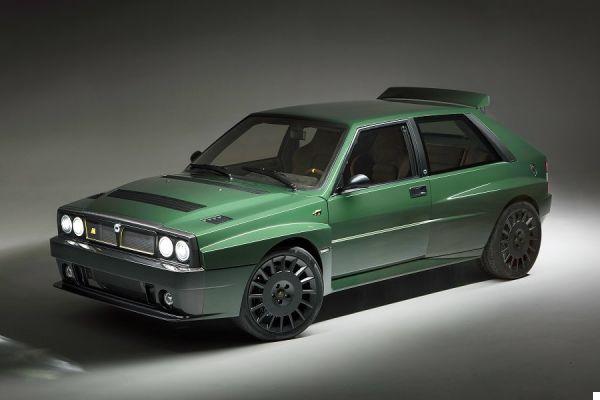
"The restomod is not tuning. This is a full-fledged restoration, but not a conservative one. It's a innovative restoration, which may have different future developments and different interpretations ”. But what do you usually do to cars to "restomod them"? The modern component of the name makes the goal clear: modernize classic cars. But how? The first macro-topic we touch on is obviously the mechanics. Of any type of car, from sports cars to small cars, technology has made great strides at the level of brakes, tires, basic electronic safety systems and above all the engine. The most desirable restomods in fact have engines that often start from the basic ones, but which are totally revised, revisited and brought to 2021.. An example? One of the most fascinating restomods around, the new one Kimera EVO37, of which you can find the dedicated article here on technologicfans.

EVO37 starts from the base of the Lancia 037 but it modernizes the engine, gearbox and brakes. The engine it has the original block, but totally revised by Italtecnica. It has increased displacement a 2,15 liters, the adoption together with the volumetric compressor of a turbo and totally revised internal components, and the arrival of a new 6-speed manual gearbox. The result? A power of 505 hp, even higher than that of the 037 Group B. But also in terms of chassis, suspension and brakes and tires EVO37 has been modernized and made almost a 2021 car. Almost, why just look at it to review the lines of the legendary 037, and remain in love with it. Another example? There Alfaholics GTA-R 290, a revised and corrected version of the Alfa Romeo Giulia GT made by Alfaholics, a British Alfa Romeo specialist. I don't know about you, but look at it: it's incredible. But we will talk about her in detail very soon ...
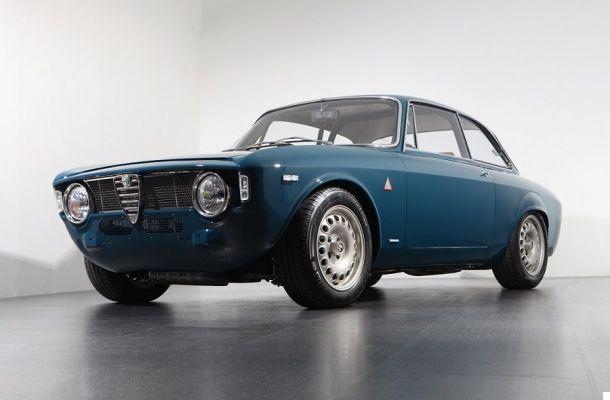
But we don't stop at mechanics alone: the best restomods also have great interior and exterior improvements features modern. The vast majority of restomods see the arrival of an air conditioning system and the aforementioned front, rear and interior LED lights. ABS, electronic ignition, is often adopted, while a radio with Bluetooth connection and chargers for portable devices makes its appearance inside: classic yes, but usable in the real world.
Singer, Eagle, ... Morgan: who made the restomod popular
And this is precisely the mission of the restomod: making the classic cars we all love better but with respect, without losing their soul. Anyone with a bit of mechanical skills would be able to fit a modern engine under the hood of a classic sports car, but that would be what in the jargon is called "huddle", something patched up, soulless. The restomods, on the other hand, aim to make the cars we have loved most over the years usable every day, from the Panda by Garage Italia Customs to the incredible Singer..

And speaking of this House, before our ranking of the best restomods ever created we want to mention the companies that first believed in this world, before it became so famous and fashionable. The first time we heard the term restomod was atearly 10s, when several British journalists, including the legendary Chris Harris, visited California to get to know Singer, a restorer who enjoyed making Porsche 911s modern. Founded by Rob Dickinson and Magnus Walker, this small Californian company starts from the Porsche 911 964 of the 90s and changes them, modernizing them and creating sensational cars.

The aesthetic echoes that of the first Porsche 911s of the 60s and 70s, both indoors and outdoors. The engines are totally revised with the help of Cosworth, still air-cooled but with more power, more technology and, on the incredible Singer DLS, modified with the help of Williams Engineering (yes, the Formula 1 team). The result? Porsches that are incredible to see, hear and drive, and with a truly exorbitant price, from 500.000 euros upwards.
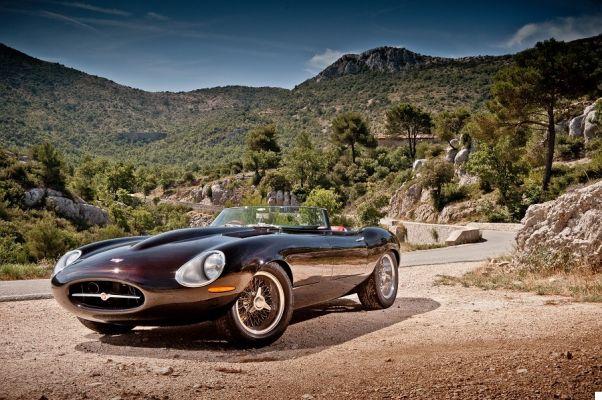
In terms of prices, however, also Eagle he is not joking. From sunny California to rainy England, more precisely in the Sussex, where a small group of British enthusiasts founded the Eagle, a small atelier specializing in the restoration of the incredible Jaguar E-Type. Having made a name for herself among E-Type enthusiasts for being one of the best specialists of this model, Eagle had a blasphemous idea: what if we improved the E-Type? Half the world's purists turned up their noses, rightly thinking that modernizing an original E-Type with new bodywork, new engines and new components could be nothing short of insane.

The result, however, is exceptional. Eagle has made several special E-Types, from 2011 Speedster (appeared in a memorable Jeremy Clarkson rehearsal on Top Gear) at Low Drag Coupé until the last creation, the Lightweight GT. Eagle doesn't revolutionize E-Types, it improves them. It adds some modern touches to the bodywork, modernizes the brakes, gearbox, interior and engine, adapting the 6-cylinder in-line XK engine by increasing its displacement, power and nastiness. The Eagles are made entirely by hand, and the cost is truly incredible: it starts from 600.000 euros, to reach even over a million.

Finally we close with who has been using the Restomod for decades, even before this term was invented: Morgan. The famous English house, born in 1909, is in fact famous for having The production techniques, lines and character intact from the 50s to today are preserved on almost all of its models. Le Morgan Plus 4 and Plus 6 and the crazy 3-Wheeler, in fact, resume almost unchanged the lines of the Morgan of the 30s, 40s and 50s, combining them with modern mechanics. Just this year Morgan has revised its entire range, with the new Plus 4 and Plus 6.
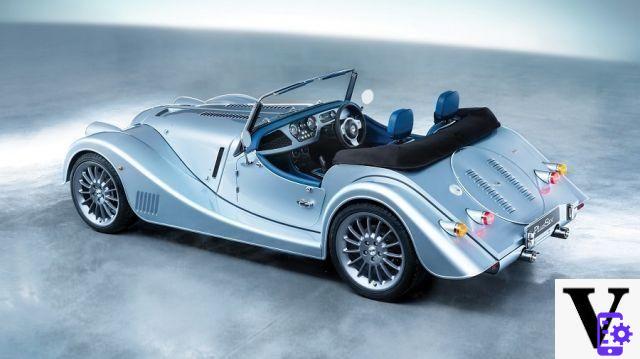
The news? Under the hood of both a pulsing modern BMW engine, 2.0 turbocharged 4-cylinder with 258 hp on the Plus 4 and the 3.0 turbocharged 6-cylinder in line with 340 hp on the Plus 6. The aesthetics, however, remained identical to tradition, apart from the full LED headlights, as well as the interior, where we find analog instruments and super classic lines, but also a small digital screen and a modern BMW gear lever. But above all, since the 50s Morgan has used… wood for the chassis of its cars. Really, the wood! Although therefore they are not considered real restomods, the Morgans retain the aesthetics and part of the structure of the ancestors of 60 years ago, modernizing engines, technology and safety.
And now even the manufacturers are throwing themselves into the restomod: the Opel Manta GSe and others
And after several small companies that have launched into the new restomod niche, now the houses are coming. Like? There are two main currents of thought that the major car manufacturers are using. On the one hand, we have those who revise and modernize their cars while keeping most of the original components. An example? Jaguar, truly dedicated to this practice.

A few months ago the Coventry House has “Revitalized” a small fleet of Jaguar C-Types, keeping many of the original features but with modern materials and skills. A few years ago instead Jaguar has it directly The production of very few special Jaguar E-Type Lightweights has restarted, never produced due to a fire at the Coventry factory in the 60s. There is indeed a division of Jaguar dedicated to these cars, the Jaguar Continuation.

Alongside those who take back their cars while keeping their mechanics almost intact, there are those who have decided to choose a “modern” restomod, an… “elektromod”. We are talking about Opel, which just recently presented the Manta GSe. A game, a provocation by the House, which he wanted celebrate its legendary Manta coupe with an electrified reinterpretation. After all, Opel Vizor was born from the grille of the original Opel Manta, the new front grille now adopted by Mokka and soon by all the other Opels. And in fact, the front is dominated by this glossy black grille that you also rediscover a screen, where you can project “nice” messages such as “I'm on a secret e-mission.”. Aaah, German humor ... IThe rest of the bodywork is lively, totally 70s but with modern references, such as the rims and Full LED headlights. Really beautiful, iconic and eye-catching.

Inside, it is truly splendid. The starting board is that of Manta, but everything has been revised. THE sedili are those of Adam S, and the analog dashboard was replaced by two screens taken directly from those of the new Mokka. Modernity and 70s lines that come together, and the manual transmission, a surprise for an electric car. The Manta GSe is in fact zero emissions, and is the most powerful non-racing Manta ever produced by Opel. The engine has 147 hp, 42 more than the 105 of the starting GT / E, the drive is rear and the battery is small, from 31 kWh. Insane? Yes, absolutely. But Opel remained amazed by the demand for this ElektroMod, intended as a unique specimen. Is there a small limited series in sight?
The future of the restomod: is an ever larger niche emerging? Merit (and fault) of the electric
And this is precisely the most interesting and curious side of the phenomenon Restomod. Born as a niche for very wealthy people bored by the "usual" supercars, this trend of transforming and modernizing classic cars is becoming semper più popolare. In fact, many see the new cars released all the same, without a soul and without that character that they find in older models.
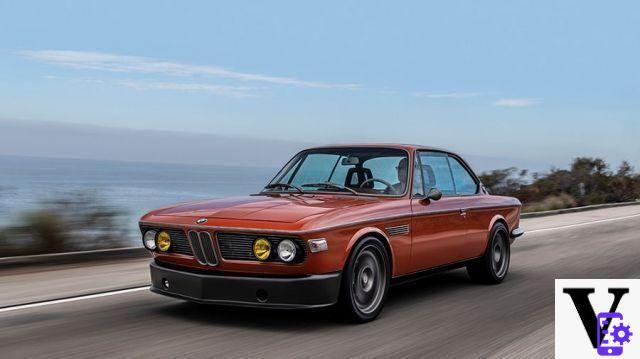
In countries where the legislation is less stringent, such as Germany and England, many new realities of this type are emerging. Small specialists who modernize old MGs, or old Mercedes and BMWs, with more modern engines, more refined interiors, air conditioning and Bluetooth radio. The example of the little girl is emblematic Rocketeer in the UK. This small company was born by chance, after the founder's desire to install a V6 engine of Jaguar origin on his Mazda MX-5. And today the Rocketeer Kits to mount 3.0 V6 Jaguar engines on Mazda MX-5 NA and NB are selling like hot cakes.

So let's not talk about exorbitant figures, but of enthusiasts willing to spend 10, 15 or 20 thousand euros for a 20 or 30 year old car with more power, a better interior and a driving experience unmatched by any modern sports car. In Italy the phenomenon of “thermal restomods” could find some difficulties, due to the very tough legislation in force. The second trend of the restomod phenomenon, however, is that of electrical conversion. In fact, many around the world are willing to choose cars they love or have always loved converted to electric traction rather than choosing new electric cars.

A historic car converted to electric drive is increasingly interesting for many enthusiasts. The driving experience is much better, more engaging, more analog, and the aesthetics of some of these restomods are incredible. Sure, the native electric will be more efficient and versatile, but electric restomods like the Manta have more charisma, more character. We absolutely must keep an eye on this phenomenon: it could go from being a niche for enthusiasts to a real boom in the market.
And what are the best cars restored in a modern way?
And now I know what you are wondering: what are the best restomods around? In recent years there have been so many surprises, and the "contenders" are so many. So don't miss the next installment of Auto for Dummies, where we will analyze the best restomods currently in circulation.. And who knows that in the near future you will not find test drive of old iconic cars put back on sale, thermal or electric. How about? You'd like it? You would buy a modernized historic car or do you still prefer to buy new cars? Let us know here in the comments. See you at the next episode of Auto for Dummies next Friday. Hi!
Discount Convert It!: A simple step-by-step guide for converting any...
Convert It!: A simple step-by-step guide for converting any...
- Toms, Ron L (Author)
 Lancia Delta HF Integrals
Lancia Delta HF Integrals
- Over 250 color images combined with detailed technical drawings illustrate this rich and elegant volume dedicated to ...
- 200 p
- Easy to use
 Jaguar E-type: The Definitive History
Jaguar E-type: The Definitive History
- Porter, Philip (Author)


























